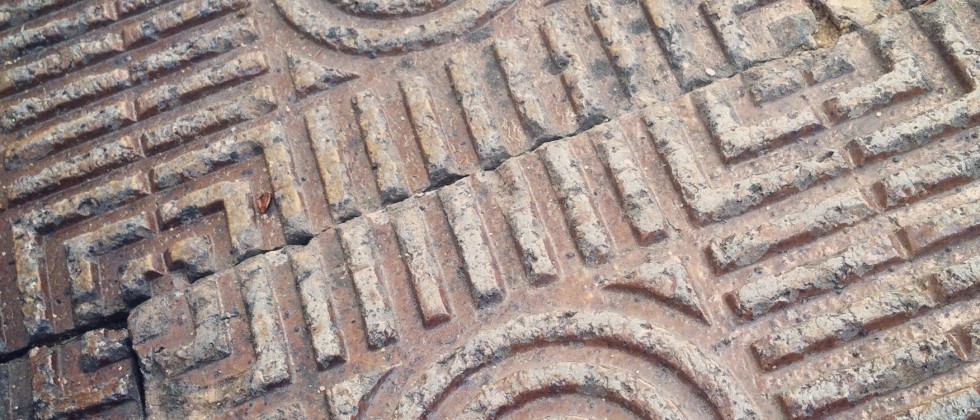
RP1 Sample Haiku

The haiku is the “short” form of Japanese poetry: 17 syllables arranged in 3 lines of 5-7-5 syllables (compared to the “long” form, the 33 syllable waka, where the pattern is 5-7-5-7-7 syllables.)
Haiku generally focus on an image drawn from the natural world and contain a seasonal reference. They are characterized by:
- A light touch, often with a humorous or surprise verbal twist;
- Linguistic dexterity, fostered by the relatively limited number of sounds in the Japanese language, and the consequent frequency of possibilities for punning;
- And a focus on the small details of nature, often common but closely observed, with a deliberate sense of contrast created between small and large, or between the transient and the infinite.
History
Haiku, which became the most popular verse form in Japan’s Edo period (1600-1868), was originally practiced in a complex collaborative form knows as linked verse (haikai no renga).Gradually, over the course of the Edo period and under the influence of the great poet Buson, this practice of linking verse evolved into a concentration on the initial 17-syllable verse in the sequent—the hokku or haiku we know today, which does not depend on a previous verse, but stands alone.
Haiku by Matsuo Basho
The old pond
A frog jumped in,
Kerplunk!
On a bare branch
A crow is perched—
Autumn evening.
I will bind iris
Blossoms around my feet—
Cords for my sandals!
Haiku by Yosa Buson
Behold, an old man
Cutting stalks of pampas grass
Behind him, the wind.
Scattered petals lie
On the rice-seedling waters:
Stars in the moonlit sky.
The raftsman’s straw coat
Is now in the storm become
A cloak of blossom
Lesson Plan: Haiga and Haiku
Target Grades: 3-5
State Standards of Learning
English 3.17, 3.26
Visual Art 3.10, 3.13, 3.17, 3.26
Overview
Children combine poetry and art to produce traditional haiga—haiku-inspired paintings.
Essential Question
How is the special appreciation Japanese people have for the natural world revealed in their writing and art?
Objectives
- Students will write seasonal verse using the syllabic pattern of Japanese haiku.
- They will paint pictures inspired by their writing.
- They will discover the Japanese aesthetic for finding beauty in the natural world in yet another art form.
Management
- Collection of haiku (see the Sample Haiku resource page)
- Paper and pencils
- Watercolor paints and brushes
- Paper for painting
- Black paint or black markers
Preparation
Find examples of haiga (haiku paintings) online. Save for projection.
Read the Sample Haiku resource page, which describes how this deceptively simple form of verse works.
Activity
- Introduce students to the form of the haiku, a three-line poem of the syllabic pattern 5-7-5.
- Read aloud several haiku written by the Japanese masters. It’s fun to start with Basho: The old pond/A frog jumped in/Kerplunk!
- Ask students to close their eyes and imagine the moment that inspired this poem—a perfectly still moment interrupted by a frog leaping into the water. Introduce the Japanese sentiment expressed as mono no aware—an awareness of things, especially of things that do not last, like the stillness of the pond.
- Have children notice that like so many other Japanese arts, haiku reflect on nature. They often provide a verbal twist or contrast, first offering a larger view, then focusing in on a small detail.
- Talk about the current season. Together, come up with a list of seasonal words that can be used in a haiku. Japanese poets actually use almanacs that contain seasonal word inventories.
- Project several haiga examples to show children how haiku can inspire art. The hai in haiga, like the hai in haiku means “lighthearted.” Ku means “verse.” Ga means “painting.” Haiga are poem paintings.
- Challenge the children to write a haiku and to paint a haiga inspired by it. (You can ask them to incorporate a seasonal word from their list.) The haiku should be handwritten on the haiga at the end.
- Have the children read their haiku, then display their haiga.
Variations
Hold a Haiku Death Match! This goofy contest is popular at colleges and universities and among haiku writing groups. Have students write several haiku in advance of the “death match.” The haiku are copied onto strips of paper with the poet’s name on the back. Collect the poems and place them in a box.
Choose three judges to sit at a table in the front of the classroom. Give each judge two pieces of cloth, one white and one red (samurai headbands). Invite the first three contestants to come to the front of the room. Give each contestant three or four haiku.
Begin the first round. Each contestant takes a turn reading one haiku twice, reciting it with great, even exaggerated expression. After all three have read, the judges are asked to judge the best haiku for that round. As you point to the first contestant, the judges hold up either the white cloth (thumbs up) or the red cloth (thumbs down). The haiku that received the most white cloth votes wins, and the poet, whose name is on back, is identified. Repeat with the remaining haikus, then declare the winning reader for that round. That reader remains for a new round, as you invite up two more contestants. Continue in this way until you have run out of haiku.
In this contest, reading performance is weighed as heavily as the merits of the haiku, so winning and losing is ambiguous, taking the pressure off your young readers and writers.
Printable forms of these documents: RP1 Sample Haiku and Lesson Plan: Haiga and Haiku
Tea in a Box © 2007, Washington and Lee University
Contact Info
- P: 540-458-8936
-
Senshin’an Tearoom
Professor Janet Ikeda
c/o Dept of East Asian Languages and Literatures
Washington and Lee University
Lexington, Virginia 24450
Location
- P: 540-458-8034
-
Watson Galleries
Washington and Lee University
Hours: Contact the Reeves Museum of Ceramics